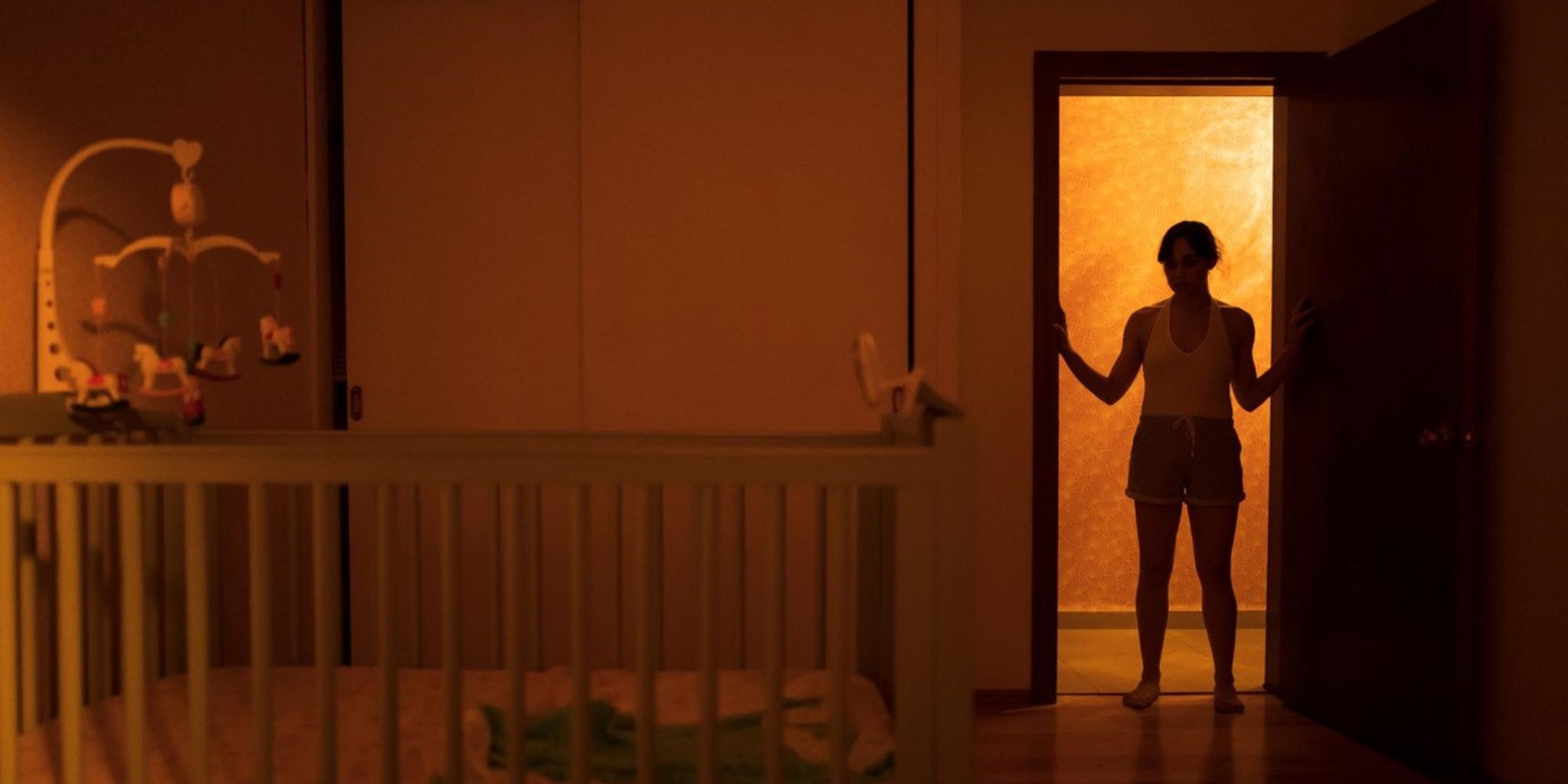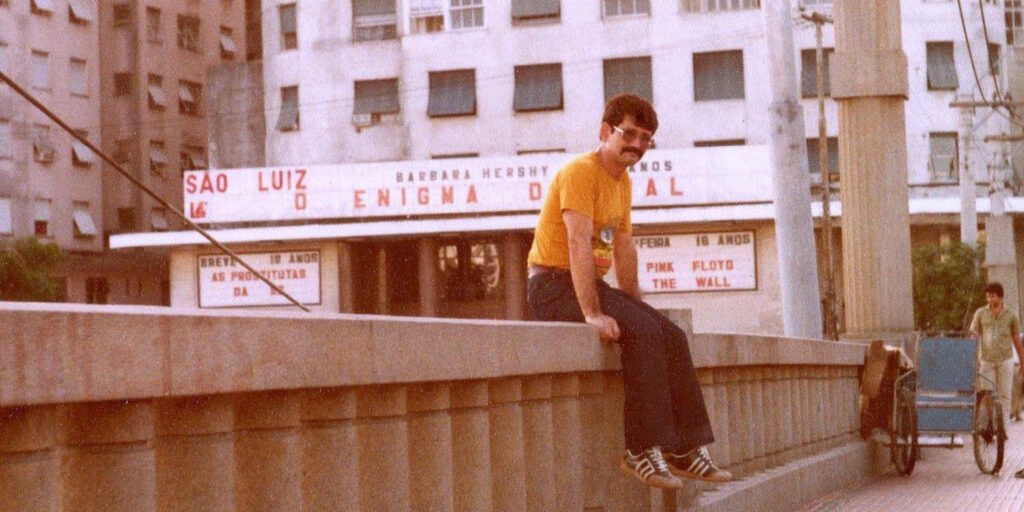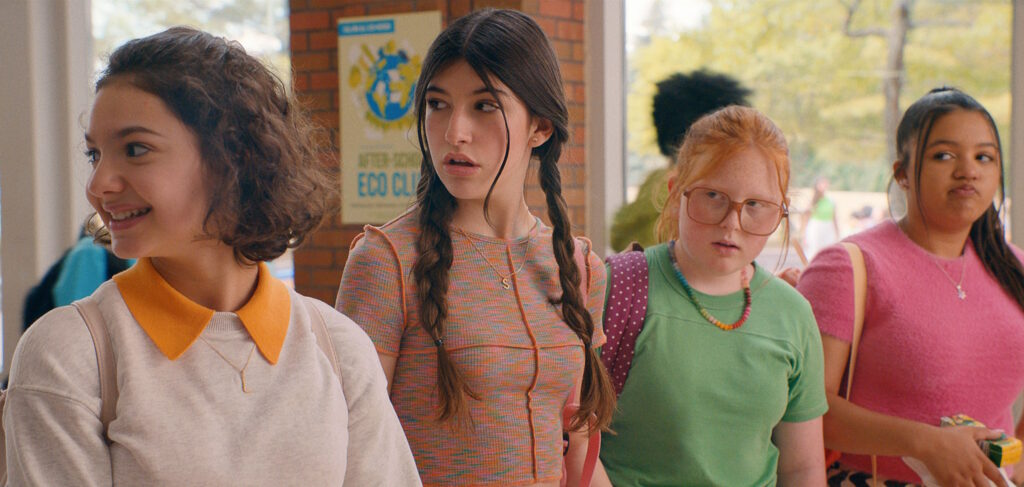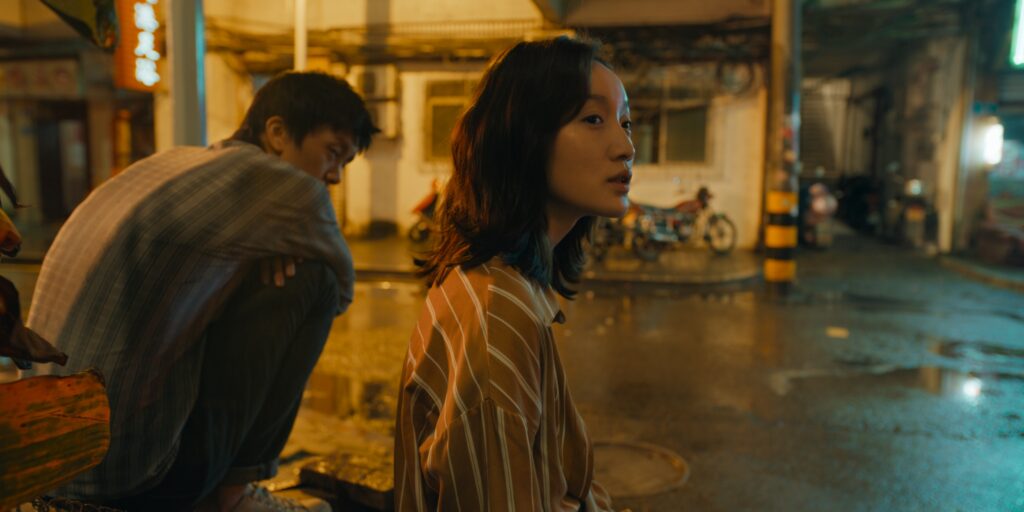I’m having a baby. This thought elicits excitement and anxiety for almost all mothers-to-be, including Valeria (Natalia Solián). She is young, married, and financially stable, and having a child is the natural next step toward a respectable bourgeois adulthood. Outwardly, Valeria radiates the kind of enthusiasm for motherhood that Mexican society (hell, almost every society) expects of women of a certain age. She and her jazz-musician husband, Raúl (Alfonso Dosal), set themselves to the endeavor with a dutiful eagerness, and they impatiently tear into the test results from her obstetrician as if it were a congratulatory sweepstakes letter. A self-employed carpenter by trade, Valeria begins hand-making a crib for her impending child, fussing over every detail, down to the tastefully stylized wooden animal mobile. Her diligent preparations suggest a woman who is more than ready for a new chapter in her life.
And yet. Part of the captivating intelligence of writer-director Michelle Garza Cervera’s Huesera: The Bone Woman lies in how this initial picture slowly unravels, revealing the existential terror just beneath Valeria’s tissue-thin façade of joyful anticipation. During an ostensibly celebratory dinner at the home of her parents (Enoc Leaño and Aida López), Valeria’s sniping, embittered sister (Sonia Couoh) expresses doubts about her suitability for motherhood, noting that she barely tolerates her young nephew and niece. What’s more, the family can’t resist bringing up an incident in which a teenage Valeria had a nearly fatal mishap while babysitting a neighbor’s infant child. Valeria visibly seethes at these passive-aggressive provocations, partly in anger, but also partly in burning shame that perhaps her family has a point. Valeria’s spinster aunt, Isabel (Mercedes Hernández), is the only one who seems to be in her corner.
This tense family gathering – combined with a disarming chance encounter with an old neighborhood friend (Mayra Batalla) – seems to catalyze Valeria’s psychological splintering, although there may also be supernatural forces at play. While sneaking a much-needed cigarette late that night, she witnesses a ghastly sight: A woman living across the street jumps from her third-floor balcony but somehow survives, slithering across the pavement on bloody, shattered limbs. However, when Valeria fetches Raúl, the broken woman has vanished. Thereafter, Valeria is haunted by a malevolent presence that skitters at the periphery of her vision, an entity that is always announced by the sickening crick-crack of snapping bone.
Or perhaps this is only the sound of Valeria’s compulsive knuckle-cracking, an anxious habit she engages almost unconsciously. Many of her fearful visions can be similarly explained away, yet her feelings of being hounded and trapped persist. The deluge of hormones pumping through her bloodstream exacerbates her long-suppressed angst about the life she has chosen, such that the distinctions between reality and nightmare start to become terrifyingly muddy. Unlike that of many contemporary horror features with one foot in the folkloric otherworld, Huesera’s screenplay – co-written by Cervera and newcomer Abia Castillo – is unburdened by obligatory scenes of supernatural-themed exposition. There is no gnarled wisewoman who helpfully explains the nature of the dark being that has latched onto Valeria. The broken-bone woman simply is; a demon, dream, and metaphor, all at once.
There is a cunning bruja of sorts in the film, in the form of Aunt Isabel’s friend Ursula (Martha Claudia Moreno), a nail-salon owner and part-time occultist who subtly subverts the viewer’s expectations with her dyed scarlet braids and sequined stretch pants. Valeria is a modern woman, but she is not above putting her trust in the Old Magic when other avenues – such as her cheerfully condescending physician – have failed. Huesera smartly shows rather than tells when it comes to the ritualistic specifics of this hedge magic: Ursula burns herbs, murmurs a prayer, and looks for omens in a spider’s web. Valeria nervously asks what recourse she has if these spells do not protect her from her spiritual parasite. Ursula replies that there is another way, but it is dark and dangerous. The film doesn’t need to elaborate, nor does it need to explicitly promise what a canny viewer will deduce: We will witness these black arts before the end credits roll.
Any contemporary horror film about pregnancy and motherhood will unavoidably recall Rosemary’s Baby (1968). Such comparisons are often unflattering, but in the case of Huesera, the parallels (and contrasts) suggest both the sophistication of Cervera’s feature and the timeless richness of its forebear. Both films are concerned, in part, with the rigid social expectations placed on women and with the way that mothers-to-be are simultaneously beatified and infantilized. In an early scene, Valeria visits a shrine to St. Mary at the behest of her female relations, but the film presents the towering golden statue of the Virgin as ominous rather than reassuring. Here is the most holy thing to which you can aspire, the Mother of Christ seems to say, pitilessly judging Valeria’s secret doubts.
Indeed, Valeria’s ambivalence about motherhood speaks to a deeper and much more personal anxiety than Rosemary Woodhouse’s (justifiable) paranoia about the devil worshippers next door. There is no need for shadowy satanic conspiracy in Huesera: Valeria has been worn down by the thousand banal cuts of Catholic traditionalism, respectability politics, and unspoken familial guilt. Cervera sprinkles her film with clues for the queer-eyed viewer, not-so-subtly hinting that Valeria’s entire adult life represents an act deforming self-mutilation. The telltale signs are there from the start, most conspicuously in Valeria and Raúl’s perfunctory lovemaking and their gender-flipped professions – he the artist, she the hands-on tradeswoman. The film eschews the clumsy drama of a sudden reveal, instead gradually pulling aside the curtain to expose the more authentic self that Valeria has been running from for 15 years.
Of course, almost everyone changes between their rebellious teen years and their more settled 30s, and often dramatically so: Our priorities shift, our lives take unexpected turns, and the face we present to the world changes until we become unrecognizable to ourselves. Huesera is about a deeper and more vexing itch, a growing, panic-stricken awareness that one has willingly built a prison of fiction around oneself. It speaks directly to a fundamental facet of many queer experiences, but it also has a universal resonance: We all have a proverbial electric guitar stashed in the back of the (ahem) closet, next to a box of mementos from a wilder, cooler, and perhaps more genuine time.
Most of the women around Valeria would doubtlessly say that it is vital for a new parent to discard such past-life relics. These matrons stifle her with endless prattle about the boundless wonder of motherhood, the powerful maternal urges that will kick in for her any day now. There is no magic moment of conversion for Valeria, however: She feels only dread at the lifelong obligation that is swelling in her womb. Like The Babadook (2014), Cervera’s film does not shy away from a transgressive perspective on motherhood, presenting an implicit antinatalist argument that will doubtlessly raise eyebrows. Yet alongside its sharp critiques of heteronormativity, Huesera also proffers a message of compassion, suggesting that to spare an innocent child a lifetime of resentment is not an act of selfishness, but profound love. And for love, a mother will crawl to hell and back.
Huesera: The Bone Woman is now playing in select theaters and will be available to rent on major online platforms on Thursday, Feb. 16.




